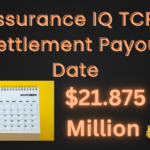Drop and swap allows property investors to drop their ownership structure out of an entity level to a co-ownership and turn past partners into tenants in common. When this type of property is sold then the proceeds will be divided proportionally. It also allows co-owners they either cash out and pay their taxes or reinvest into other purchased investment properties through a qualified intermediary (QI) and still defer taxes.
Drop and Swap 1031
A “drop and swap” 1031 exchange is a strategy that can be utilized by real estate investors to defer capital gains taxes while selling and buying investment properties. In the drop process ownership structure is changed from a partnership to a tenancy-in-common (TIC). It simply means that the partners “drop” their partnership interests and become co-owners of that property. After that the co-owners proceed with a 1031 exchange, where they can either reinvest the proceeds into new investment properties or get a cash-out; it basically depends on their own preference.
Drop and Swap 1031 is very useful when one or more property partners want to cash out whereas some of them want to continue deferring taxes through a 1031 exchange. It is a totally legal and effective way to stay away from the complexities of partnership interests in real estate investments. Partnership interests normally satisfy the definition of personal property. It means that unfortunately it can’t be exchanged under the Internal Revenue Code (IRC) 1031.
A partnership can do a 1031 exchange of investment property on the entity level, which means that the entire partnership has to sell the renounced property, buy the renewal asset, and still defer taxes until it remains intact. The motive behind this is that Section 1031 requires that exchanges of partnership property must be handled by the same taxpayer. It only applies to partnerships until they don’t change their configuration before acquiring a new property or asset.
What are the tax implications of a drop and swap exchange?
The tax implications of a “drop and swap” 1031 exchange can be complex, but interested individuals must consider the following key points to stay away from any implications.
- Deferral of Capital Gains Taxes: The most important benefit of drop and swap 1031 is the deferral of capital gains taxes. By reinvesting the proceeds from the sale of the real partnership property into a new like-kind asset or property, you can delay paying capital gains taxes till you sell the replacement property.
- Partnership vs. Individual Ownership: When the partnership property “drops” to a tenancy-in-common (TIC) structure, every partner becomes an individual owner of that property. It means that every partner makes a decision independently whether to go with a 1031 exchange or get back their invested cash. This change in ownership structure must be carefully managed to stay away from triggering a taxable event.
- Holding Period: The IRS needs the property must be held by single or multiple owners for investment or business purposes. The timing of the “drop” and after that “swap” is crucial. If the IRS decides that the property was not held for a sufficient period then it will disqualify the exchange and impose taxes.
- Potential Risks: There are several risks involved in drop and swap 1031 like the IRS scrutinizing the transaction to make sure it meets all requirements or not. If the IRS gets information that the basic intent was to cash out rather than reinvest. In this case, the IRS may disallow the exchange.
- State Taxes: Different states have different rules about 1031 exchanges, sometimes it may differ from federal laws or regulations. Because of this, it is very important to consider state tax implications as well.
To get rid of such complexities, it is advised to consult with a tax advisor or real estate attorney who specializes in 1031 exchanges to ensure compliance and optimize tax benefits.
What documentation is required for the drop and swap” 1031 exchange?
For a “drop and swap” 1031 exchange, individuals must have various key documents to ensure compliance with IRS regulations and to facilitate the transaction smoothly. The essential documentation list that may be required for drop and swap 1031 is listed below.
- Partnership Agreement: If the property is previously held in a partnership, then the partnership agreement needs to be reviewed and possibly changed to permit partners to drop a tenancy-in-common (TIC) structure.
- Deeds: New deeds need to be prepared that reflect the changes from partnership ownership to TIC ownership such as recording the new ownership structure with the specific local authorities.
- Tenancy-in-Common Agreement: This agreement highlights the rights and responsibilities of the co-owners under the TIC structure. This is very important to define how the property will be managed and how drop and swap decisions will be made.
- Purchase and Sale Agreements: You also need separate agreements for the sale of the relinquished asset. Proof of purchase of the replacement property is also required. These documents must disclose the purpose of performing a 1031 exchange.
- Qualified Intermediary Agreement: A qualified intermediary (QI) is important to facilitate the exchange. The agreement with the QI highlights the role and responsibilities of holding the proceeds from the sale and getting the replacement property.
- Exchange Agreement: For drop and swap 1031, this agreement performs a critical role because it is between the taxpayer and the QI to specify the terms of the 1031 exchange like the identification and purchasing of the replacement property.
- Identification Notice: After selling the relinquished property, you must inform them about the potential replacement properties in a written letter to the QI within 45 days. The entered detail in this notice needs to comply with IRS identification rules.
- Additional State-Specific Documents: Sometimes additional state-specific documents may be required to satisfy the local state regulations.
Holding time of Drop and Swap 1031
The timing of the “drop and swap” in a 1031 exchange has an important role in ensuring compliance with IRS regulations and to get rid of the disqualification of the exchange. The key timing considerations that are involved in drop and swap 1031 are listed below.
- Holding Period Before the Drop: The IRS makes it confirms that the property is held for investment or business purposes. There is no clear holding period defined by the IRS yet. However, it is expected that you must hold the property for at least one year before converting the partnership interest to a tenancy-in-common (TIC) interest.
- Timing of the Drop: The “drop” from a partnership to a TIC structure should be done properly in advance of the 1031 exchange. It means that you need to convert the ownership structure before listing the property for sale. The longer the period between the drop and the swap occurs, the better it is to show that the change was not solely only for the purpose of the exchange.
- Identification Period: After selling the relinquished and partnership property, you only have 45 days to show potential replacement properties. This identification process must be in writing form and submitted to the qualified intermediary (QI).
- Exchange Period: The whole drop and swap 1031 exchange process must be completed within 180 days from the sale of the partnership property. The exchange period will be closed on the date of purchase of the replacement property.
- Post-Swap Holding Period: After purchasing a replacement property, it must be held for a reasonable period to show the basic reason to hold it like for investment or business purposes. This process is just like the pre-drop holding period in which a common practice involves which holding the replacement property for at least one year is compulsory.










